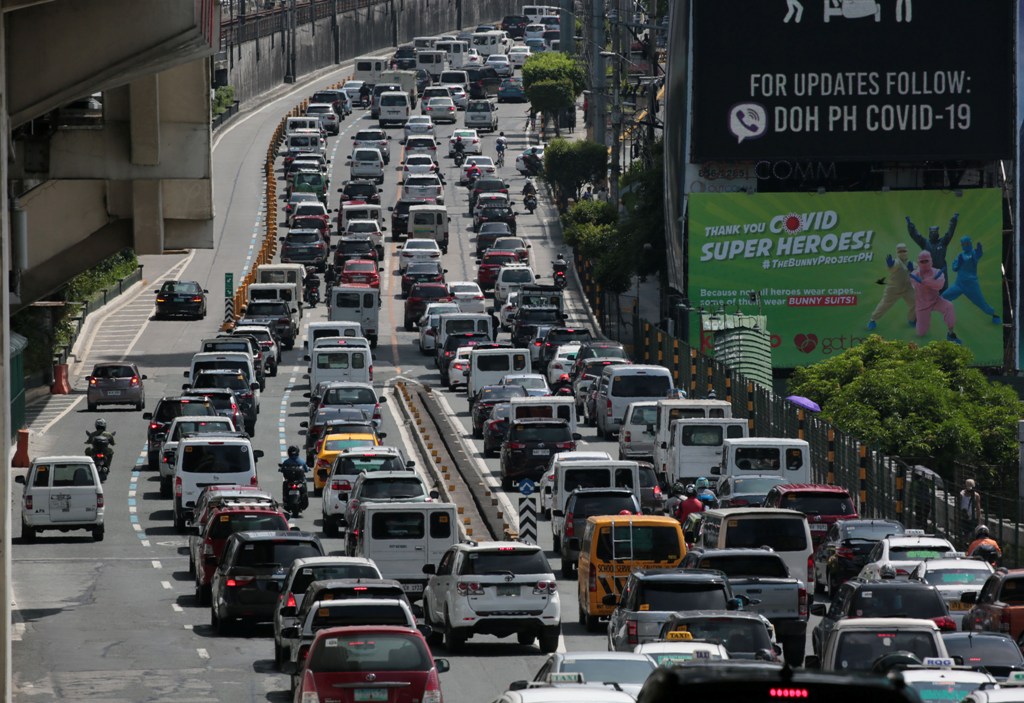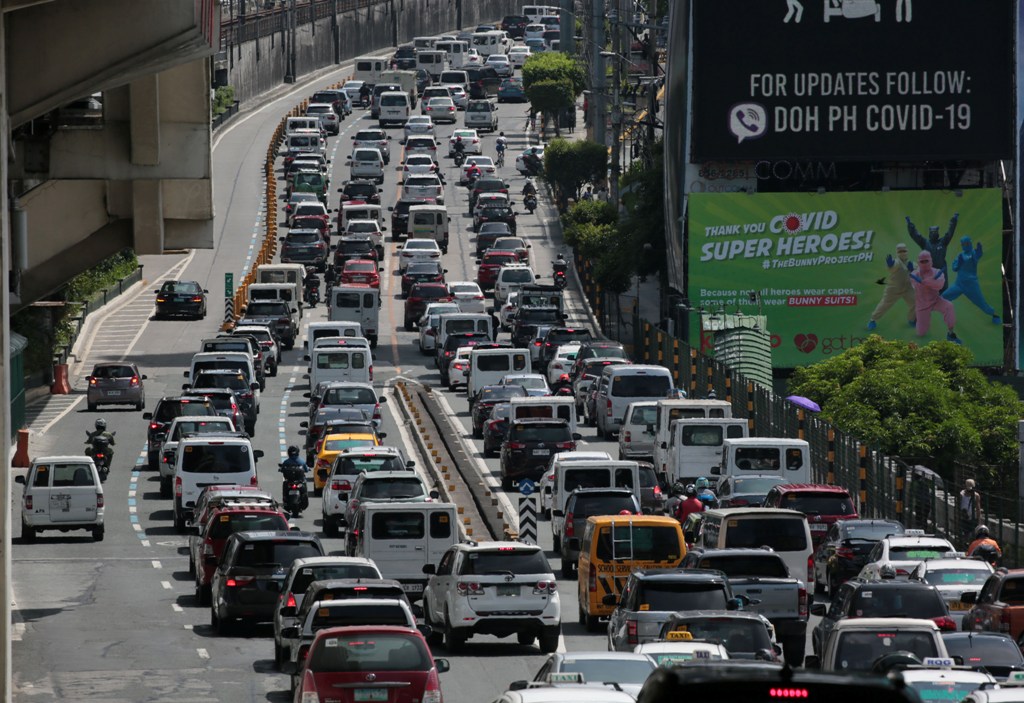
By Arjay L. Balinbin, Senior Reporter
THE Philippine capital slipped 10 spots in the Global Smart City Index released on Thursday by the Switzerland-based Institute for Management Development (IMD), as residents expressed concern over traffic jams, corruption and air pollution.
Manila ranked 104th out of 109 cities in the IMD’s Smart City Index 2020, down from 94th spot last year. It also received the lowest rating of “D” as a smart city as compared with last year’s “C.”
The index also showed Manila had the worst ranking among eight cities in Southeast Asia and 34 cities in East Asia and the Pacific.
“Residents in Manila consistently identified air pollution, road congestion and unsatisfactory public transport services as major problems, while often also highlighting corruption of public officials. These elements majorly contributed to the drop in the ranking of the city in this year’s Smart City index,” Christos Cabolis, chief economist at IMD Business School in Switzerland and Singapore, told BusinessWorld in an e-mail interview.
The IMD survey, conducted from May to April this year, covered 120 residents in each city. IMD said the ranking “measures the perception of citizens in terms of the impact of technology on their quality of lives.”
Based on the survey results, 54.8% of Manila residents perceived road congestion as the most urgent concern in the city, followed by corruption (54.4%), health services (48%), air pollution (46.8%), and unemployment (45.2%).
The study considered health and safety, mobility, activities, opportunities, and governance as key indicators for the provision of both technologies and structures in each city.
On the city’s availability of technologies for health and safety, Manila scored the highest (67 points out of 100) on the provision of CCTV cameras, which respondents claimed made them feel safer. Manila scored lowest (38) on the availability of a website or application that would allow residents to effectively monitor air pollution.
In terms of mobility, Manila got a 66.3 score for online scheduling and ticket sales, as well as traffic information on mobile phones. It scored 49.1, its lowest score for this indicator, on the availability of apps that can direct residents to an available parking space.
Manila received a score of 77.9 for the activities indicator, particularly on the availability of online platforms to buy tickets to shows and museums.
Under the opportunities indicator for both work and school, Manila received its highest score (82.2) on the provision of online access to job listings, followed by online services provided by the city (69.9), and information technology skills (65.7) being taught in schools. The lowest score (53.7) was on the current internet speed and reliability.
For the governance indicator, Manila got its highest score (72.4) on the online processing of identification documents, which residents perceived to have reduced waiting times, followed by the provision of an online platform (53.6), where they can propose ideas. Its lowest score (49.5) is on the availability of online public access to city finances, which respondents thought should reduce corruption.
POLLUTION, CORRUPTION
Manila scored low on the index’s mobility indicator, with road traffic being rated a dismal 10.6 out of 100. Its other low scores were on air pollution (15) under the health and safety indicator, corruption of city officials (20.4) under governance, and public transport (30.6) under mobility.
On the other hand, Manila scored high (72) for job generation by businesses and (61.3) for the availability of employment finding services, both under the opportunities indicator.
Mr. Cabolis said the local government should implement projects to address these concerns. “Implementing projects that tackle these elements will lead to improvements — but also of importance is notifying citizens once they are implemented and how these incremental improvements fit into the long-term roadmap,” he added.
Mr. Cabolis noted the pandemic-driven efforts by both the government and the private sector to digitize schools, transportation, and even government services this year are “important developments,” as they tackle the “immediate problem of social distancing in a dense city and will provide the framework for future improvements.
“Online learning has the potential to dramatically improve the education of the poorest schools by giving access to the country’s best educators, while providing online government services has the potential to remove even the suspicion of corruption,” he said.
For Infrawatch PH Convenor Terry L. Ridon, Manila’s low ranking in the index is “an indictment of the Duterte administration’s ‘Build, Build, Build’ program.”
“More than halfway into Mr. Duterte’s term, road congestion in Metro Manila has not been resolved, and the major infrastructure projects recently inaugurated had all originated in the previous administration. There are also questionable projects such as the Manila Bay beach nourishment project that has been plagued with health, environmental and transparency issues, particularly because this is not even in the bay’s master plan. This disconnect on infrastructure priorities is exacerbated by poor health and employment outcomes during the course of the pandemic,” said Mr. Ridon, a former chairman of the Presidential Commission for the Urban Poor, via e-mail.
For Mr. Ridon, it is a “serious concern” that Manila ranked last among major ASEAN cities such as Jakarta, Hanoi, Ho Chi Minh, Bangkok, Kuala Lumpur and Singapore.
“It should give us pause if cities in countries with lower 2019 GDP (gross domestic product) per capita, such as India and Vietnam scored higher rankings than Metro Manila. In fact, even cities in countries with lower 2019 GDP growth had far outranked the country’s primary metropolitan center. Cities in Colombia, Brazil, Chile, Mexico and Argentina had city higher rankings, despite having less than 4.6% growth, some even experiencing negative growth,” he said.
Claro dG. Cordero, Jr., director and head of research at Consulting & Advisory Services, Cushman & Wakefield, said the coronavirus pandemic played a major role in the individual responses, given the urgency of concerns by the respondents.
“These urgent concerns validate the growing demand for a ‘live-work-play-learn’ environment empowered by technology. Technology has assisted in crafting micro-city designs to address the need for healthy and urban lifestyle. The growth in the number of masterplanned developments in the Philippines has certainly helped in answering this demand. However, outside of these masterplanned developments, the lack of evolving urban planning and efficient technology are quite evident — and made even more apparent by the challenges brought by the pandemic,” Mr. Cordero said via e-mail.
He said the government should consider further enhancing the role of technology in governance in order for its citizens to change their perspectives.
Joey Roi H. Bondoc, a senior research manager at Colliers Philippines, said the lockdown and pandemic provide opportunities for the Philippines to improve its ranking and become a “more attractive” property investment destination in the region.
“We believe that proper masterplanning complemented by public and private infrastructure implementation should improve Manila’s ranking moving forward. These measures will help in solving major issues in Metro Manila, including road congestion, air pollution, and unemployment,” Mr. Bondoc said in an e-mailed reply to questions.
